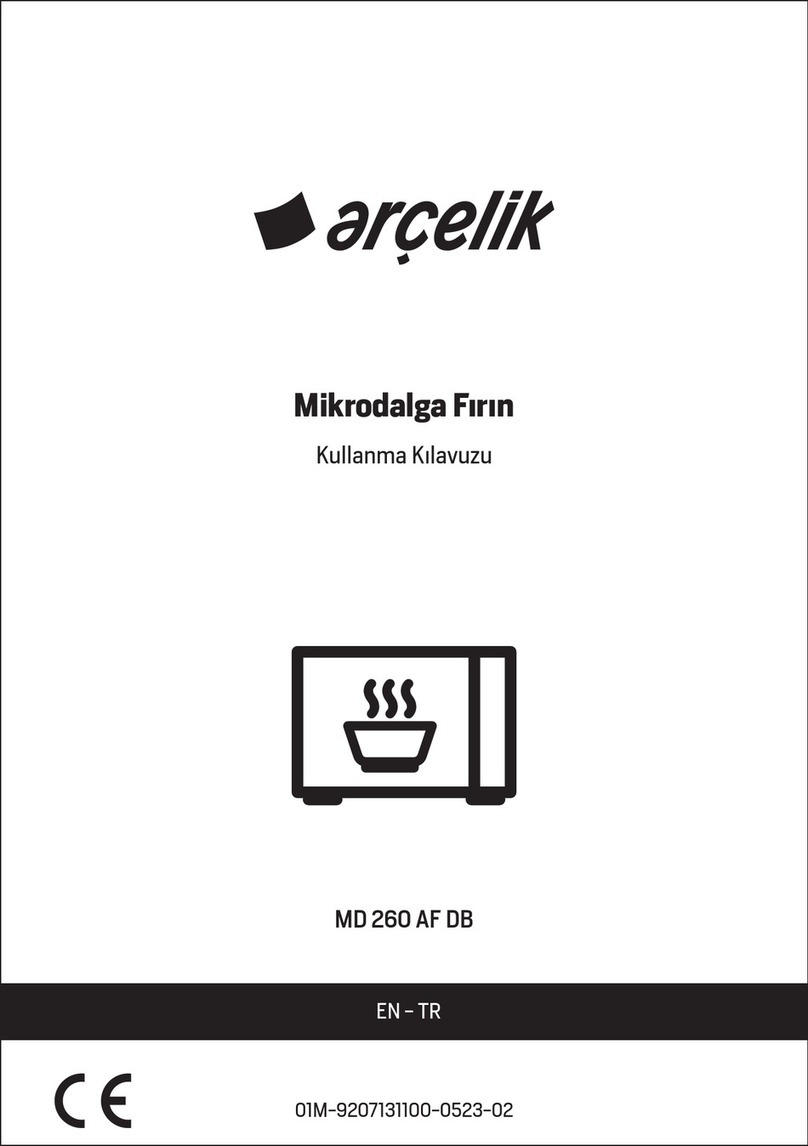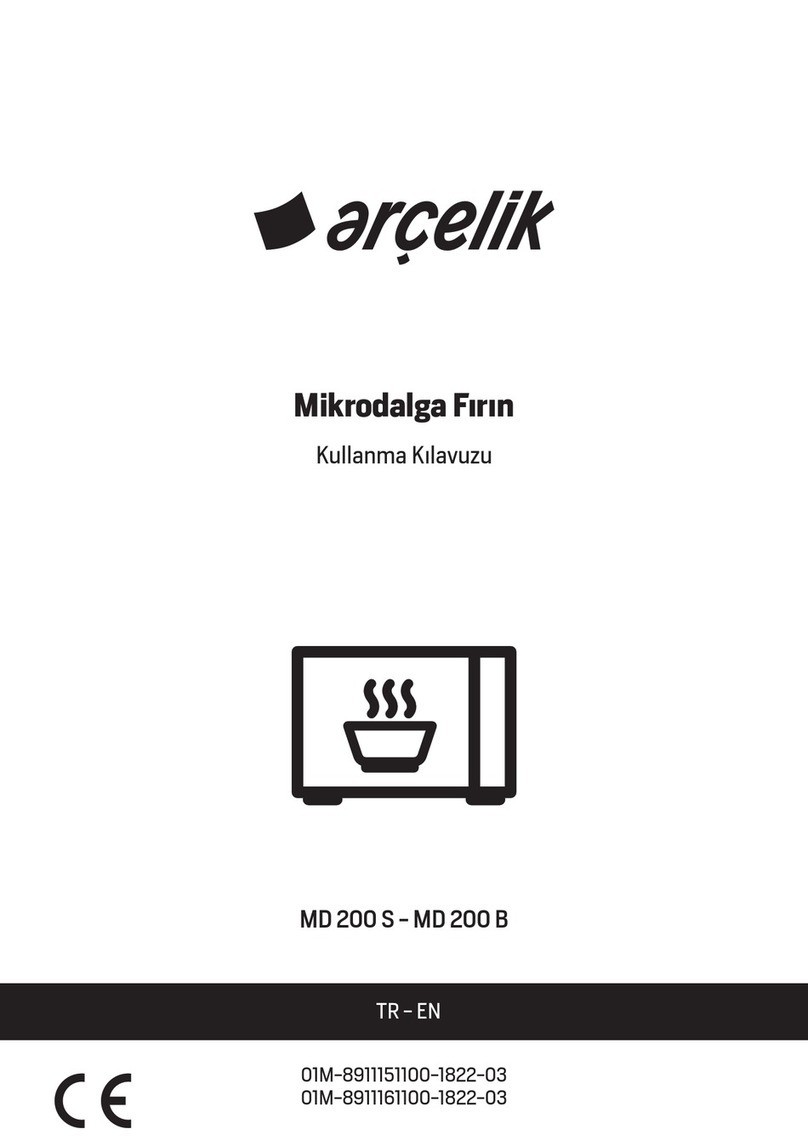arcelik MD 898 KZI User manual
Other arcelik Microwave Oven manuals

arcelik
arcelik MA 2030 S User manual

arcelik
arcelik MD 2084 GMI User manual

arcelik
arcelik MD 260 AF DB User manual

arcelik
arcelik MD 220 S Vintage User manual

arcelik
arcelik MD 893 FG User manual

arcelik
arcelik MD 893 FS User manual

arcelik
arcelik MD 211 DS User manual

arcelik
arcelik MD 201 G User manual

arcelik
arcelik MD 2310 W User manual

arcelik
arcelik MD 201 S User manual
Popular Microwave Oven manuals by other brands

Conrad Electronic
Conrad Electronic 2372935 operating instructions

GE
GE Spacemaker JVM1440BH datasheet

DAEWOO ELECTRONICS
DAEWOO ELECTRONICS KOR-6L8K5S83 Operating instructions & cook book

DAEWOO ELECTRONICS
DAEWOO ELECTRONICS KOR-1N5A9S Operating instructions & cook book

Daewoo
Daewoo KQG-6617G Operating instructions & cook book

Samsung
Samsung M1779 Owner's instructions




















